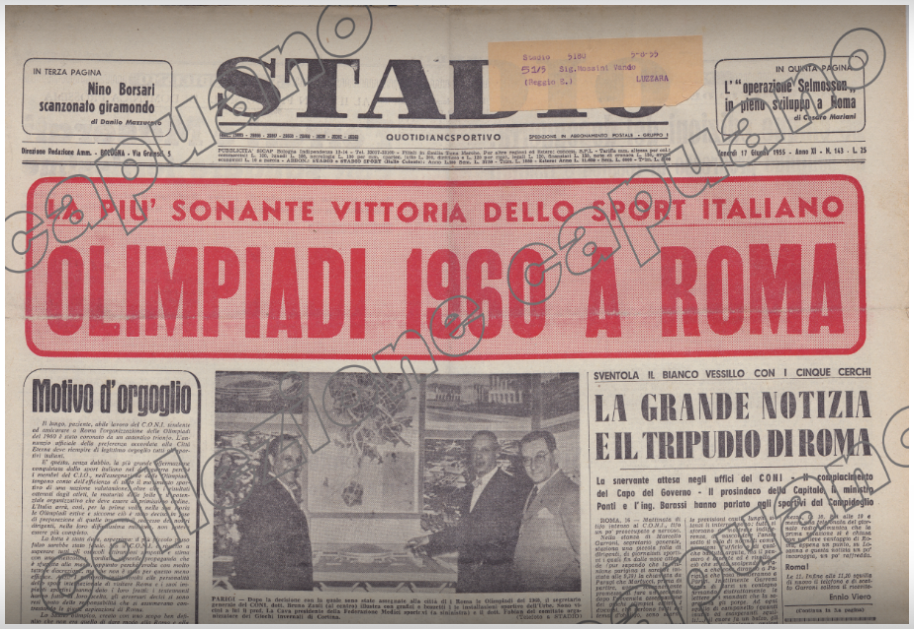Roma 1960_

Cinquantaquattro anni dopo la rinuncia per mancanza di fondi decisa dal governo Giolitti, le Olimpiadi approdarono finalmente a Roma. Nel 1960 l’Italia era all’inizio del cosiddetto boom economico, e una spesa di 33 miliardi di lire per l’organizzazione dei Giochi olimpici non dovette sembrare eccessiva. Erano stati costruiti 12 impianti sportivi stabili e 5 temporanei, altri 5 erano stati rinnovati. Nel quartiere Flaminio era sorto il villaggio olimpico, composto da 33 palazzi alti sino a cinque piani, per un totale di 1348 appartamenti. All’ottima funzionalità degli impianti si aggiunse in qualche caso il fascino di una storia millenaria: il torneo di lotta si svolse infatti alla basilica di Massenzio, mentre le terme di Caracalla furono scelte come teatro delle gare di ginnastica. La maratona partì dal Campidoglio e si concluse all’arco di Costantino, dopo un percorso che includeva anche l’Appia antica. Le suggestioni del passato non furono di ostacolo all’avanzare della modernità: la televisione, per esempio, per la prima volta coprì interamente la manifestazione olimpica, con 106 ore di programmazione (ricordiamo che allora esisteva un solo canale). Le trasmissioni erano in diretta, e in occasione delle gare più importanti si produsse il fenomeno, fino ad allora del tutto inedito, delle città svuotate di gente. Un’innovazione tecnica legata più direttamente al fenomeno agonistico fu l’introduzione ufficiale del cronometraggio elettrico nel canottaggio e nel ciclismo, mentre nell’atletica e nel nuoto ebbe una funzione solamente ausiliaria, non essendo ancora stato approvato dalle rispettive federazioni. I Giochi di Roma, che si svolsero dal 25 agosto all’11 settembre, si avvalsero di una macchina organizzativa efficiente e furono assistiti anche da un clima favorevole: non piovve e il caldo non fu eccessivo. I concorrenti furono 5346 (651 donne), provenienti da 84 paesi, tra i quali per la prima volta una nutrita rappresentanza dell’Africa nera: Etiopia, Ghana, Kenya, Liberia, Nigeria, Rhodesia, Sudan e Uganda. Fecero a Roma il loro debutto olimpico anche Marocco e Tunisia, divenuti stati indipendenti nel 1956.